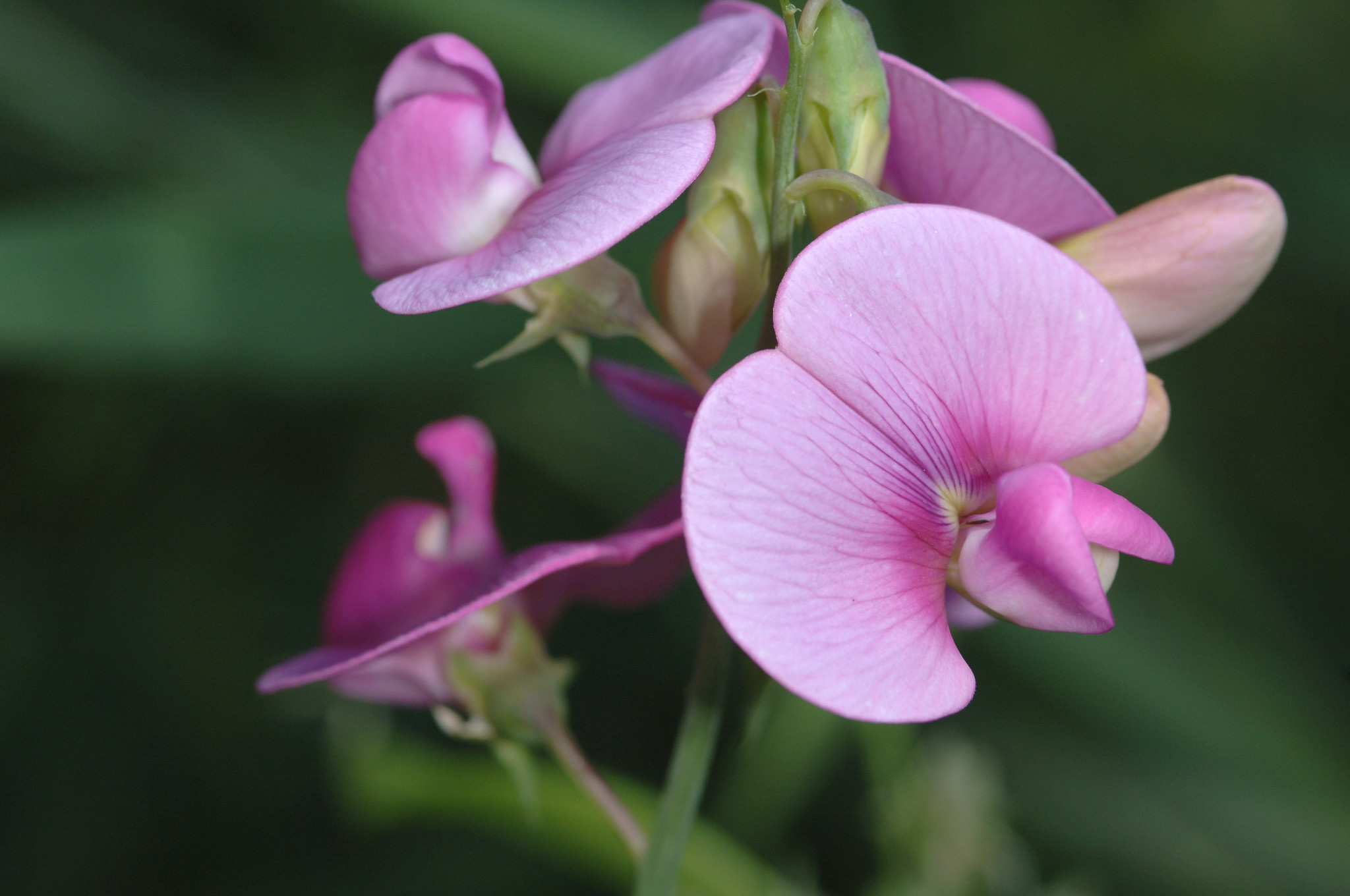Sweet peas are a classic flower in English gardens since they were introduced in the 17th century from southern Italy and have transplanted well to all parts of the world, including climate-friendly Oregon.
The first sweet peas had relatively small flowers but possessed a powerful and attractive fragrance. Sweet pea flowers naturally self-pollinate while still in bud, and it would seem that their color and perfume are there to please the gardener more than the bee. Shorter bush or dwarf varieties, including ‘Supersnoop’ types, make a colorful hedge in a flowerbed, along a walkway or in planters. Taller climbing varieties, such as ‘Old Spice Mix’ or ‘Royal Family’ can be trained to cover fences and trellises.
Both types make wonderful cut flowers with sweet, old-fashioned fragrance and a variety of colors. Be aware, though, that the peas are inedible and even toxic if ingested in quantity.
Sweet peas grow best when planted during the early spring in western Oregon and a little later in the higher elevation areas east of the Cascades. Sweet peas are susceptible to powdery mildew, a fungal disease that can infect crowded plants or those growing in damp shady places. They may also suffer from pea enation, a mosaic virus that can develop in the heat of summer. Some varieties are powdery mildew resistant.
The best way to avoid these diseases is to plant sweet peas in a well-drained, sunny location with good air circulation before mid-March and to protect the seedlings from frost.
To ensure success, prepare a 10-inch-deep trench, filled in halfway with well-rotted manure or compost. Top off the trench with soil mixed with a small amount of super phosphate or bone meal, a well-balanced fertilizer such as 15-15-15 or other organic fertilizer.
Plant the seeds 3/4 to 1-inch deep, spaced 2 inches apart. Germination may be quicker and more uniform if the seeds are soaked for 24 hours just before sowing. Slugs can be a problem, so be prepared to set traps or bail as seedlings poke through the soil.
Seedlings should be thinned to 5 or 6 inches apart. When the seedlings are about 4 inches tall, pinch off the tip of the stem above the topmost leaves to help create a bushier plant with several flowering branches. As the plant grows, mulch around the base to keep the ground cool.
Water when needed and remove the spent flowers before they set pods. By removing the spent flowers, sweet peas should blossom all summer with long-lasting, sweet-smelling bouquets.
-30-
About OSU Extension: The Oregon State University Extension Service shares research-based knowledge with people and communities in Oregon’s 36 counties and the Confederated Tribes of Warm Springs. OSU Extension addresses issues that matter to urban and rural Oregonians. OSU Extension’s partnerships and programs contribute to a healthy, prosperous and sustainable future for Oregon.

